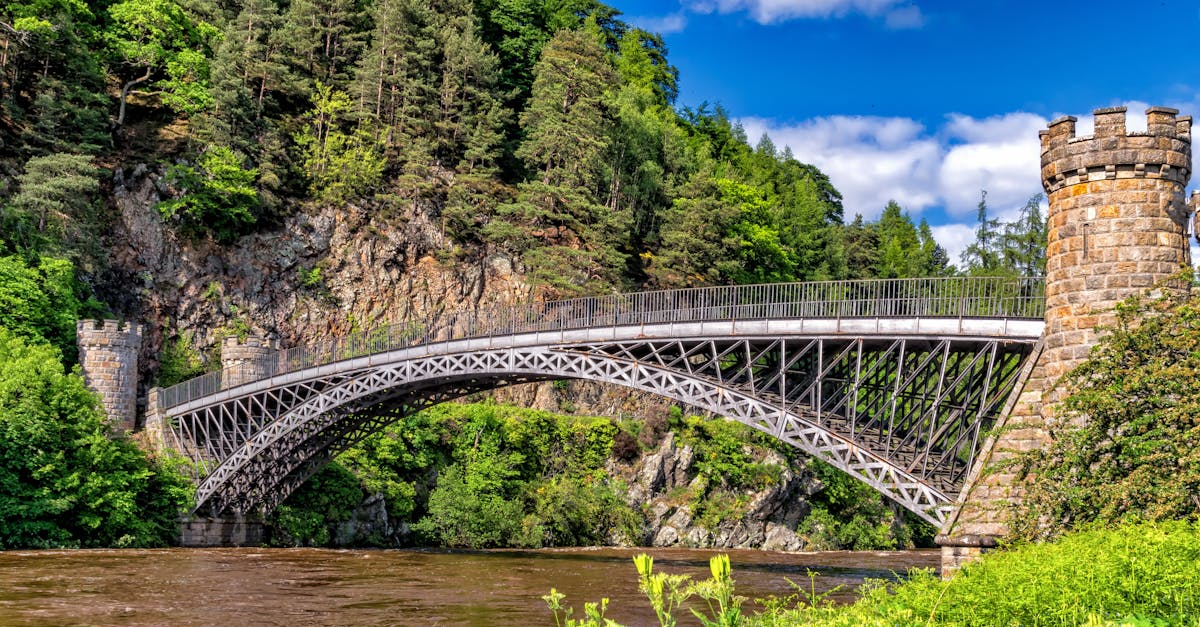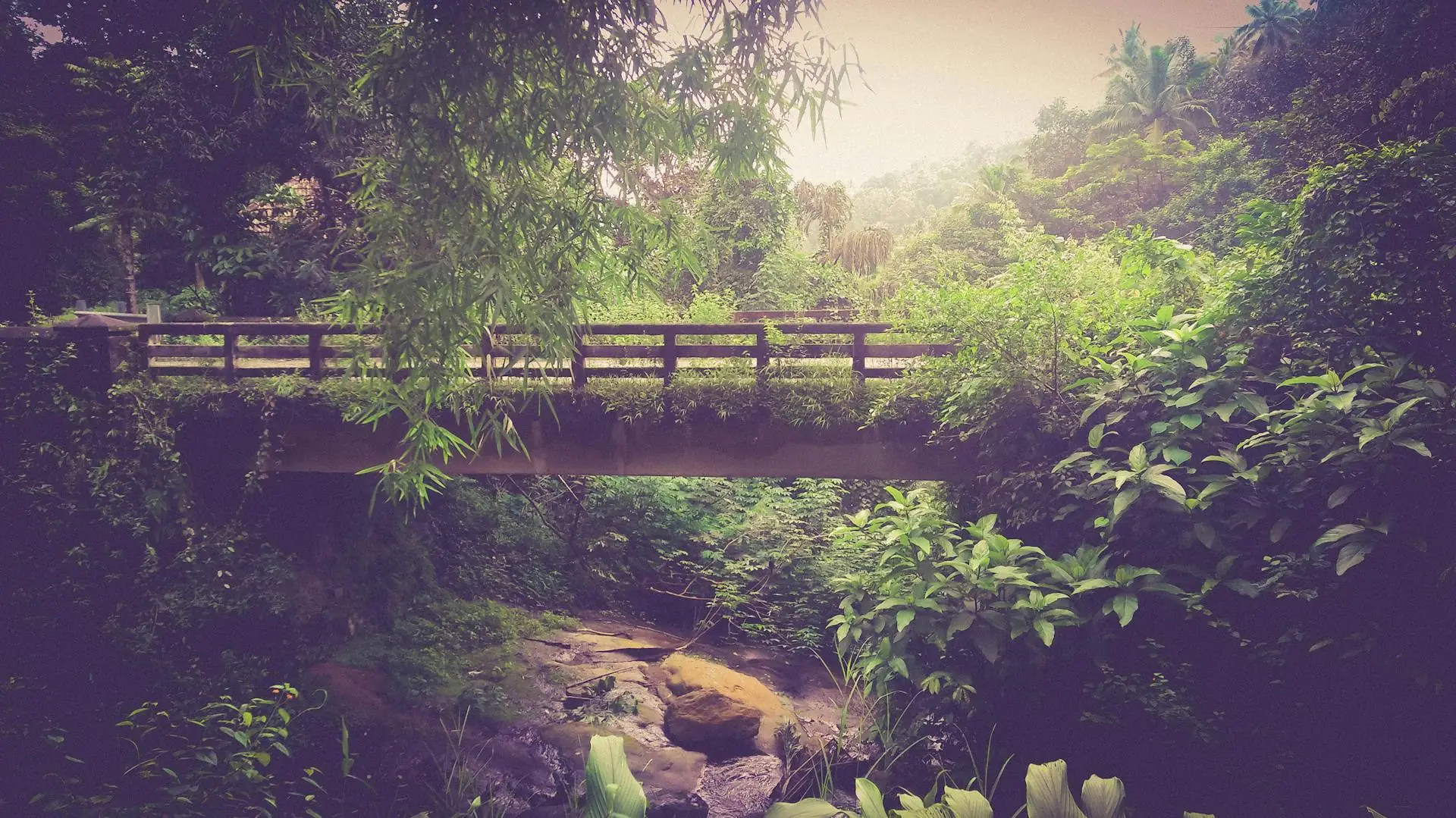Introducing Curvspace Bridges
Curvspace Bridges blends aesthetic appeal with innovative engineering, inspiring new possibilities in bridge design. Utilizing surfaces to efficiently distribute forces, these structures reduce material usage while maintaining strength, making them environmentally friendly and cost-effective. The elegant space enhances the visual landscape, adding modern sophistication. Curvspace Bridges promotes the possibilities of sustainable design ideas by using eco-friendly materials and construction methods, minimizing environmental impact. They foster community connectivity by providing safe, reliable pathways for pedestrians, cyclists, and vehicles. Versatile and customizable, Curvspace Bridges adapt to various environments, transforming ordinary crossings into extraordinary experiences that elevate both functionality and visual appeal.
Our approach includes modular elements like adjustable seating and easy-maintenance garden beds for versatile use. We emphasize multi-purpose areas, such as outdoor kitchens and versatile play zones, to create seamless indoor-outdoor experiences. Prioritizing environmental sustainability, eco-friendly materials, and energy-efficient systems.
Reader Disclosure
Jump to:
What is a Bridge?
A bridge is a structure designed to span obstacles such as rivers, valleys, or roads, providing a passage for vehicles, pedestrians, or trains. Bridges come in various forms, each suited to different purposes and environments.
Key Components
Deck
The deck is the surface of the bridge that directly supports traffic. It can be made of concrete, steel, wood, or other materials depending on the bridge type.
Piers
Piers are vertical supports that hold up the bridge deck. They are essential in beam bridges and multi-span structures.
Abutments
Abutments are the end points of a bridge, anchoring it to the ground and supporting the weight and forces exerted by the bridge.
Cables
Cables are crucial in suspension bridges and cable-stayed bridges, providing the necessary support to bear the weight of the bridge deck and vehicles.
Importance of Bridges
Connectivity
Bridges facilitate transportation by overcoming natural obstacles, reducing travel time and distance between locations. This enhances trade, travel, and communication.
Economic Impact
Efficient transportation networks, often bolstered by bridges, contribute to economic growth by enabling the swift movement of goods and resources.
Engineering Marvels
Bridges symbolize human ingenuity in overcoming physical challenges. Historical and modern bridges alike showcase advances in engineering, design, and construction techniques.
Environmental Benefits
Modern bridges, possess particularly innovative designs like Curvspace Bridges inspirational design possibilities, can reduce material usage and environmental impact. This results in a smaller carbon footprint and longer-lasting structures.
The History of Bridges
Bridges have connected people and places since ancient times. The earliest bridges, made from natural resources like fallen trees and stone slabs, date back to around 1300 BC. The Greeks and Romans revolutionized bridge construction by introducing the arch, enabling longer spans and greater durability.
During the Middle Ages, bridges became vital for trade and travel. Notable examples include the medieval London Bridge, with buildings and shops along its span, and the Pont Saint-Bénézet in France. These bridges demonstrated the blend of utility and architectural grandeur.
The Industrial Revolution marked a turning point in bridge engineering. Iron truss bridges, such as the Iron Bridge in Shropshire, England (1779), showcased new materials and construction techniques. Steel soon replaced iron, leading to iconic bridges like the Brooklyn Bridge (1883), combining engineering prowess and aesthetic appeal.
The 20th century introduced reinforced concrete, expanding design possibilities. The Sydney Harbour Bridge (1932) and the Golden Gate Bridge (1937) emerged as symbols of modern engineering. Suspension and cable-stayed bridges grew in popularity, allowing for longer spans and sleeker designs.
Technological advancements in the late 20th and early 21st centuries pushed bridge design further. The Millau Viaduct in France (2004) exemplifies how modern materials and computational modeling create efficient, elegant structures. Bridges designs, like those seen in Curvspace Bridges design ideas, highlight the continuous innovation in bridge engineering.
Bridges encapsulate the evolution of human ingenuity, adapting to new materials, techniques, and aesthetic criteria. This enduring journey reflects humanity’s quest to connect and innovate, each bridge a testament to its time’s engineering challenges and triumphs.
Purpose of Bridges
Bridges serve several critical purposes. They facilitate transportation, improve connectivity, and support economic activity. Here’s a breakdown of these functions:
- Facilitating Transportation
Bridges enable movement over obstacles (e.g., rivers, valleys, roads). They reduce travel time and enhance access to destinations that would otherwise be unreachable or challenging to reach. - Improving Connectivity
Bridges connect regions and communities. For example, the Brooklyn Bridge links Manhattan and Brooklyn, fostering urban development and social interactions by providing a vital transit route. - Supporting Economic Activity
By improving access, bridges stimulate trade and commerce. For instance, the Golden Gate Bridge enhances economic exchanges by connecting San Francisco with Northern California, facilitating the flow of goods and services. - Enhancing Safety
Bridges improve safety in transport. They offer alternative routes, reducing congestion and lowering accident rates in busy traffic areas. - Enabling Infrastructure Development
Bridges support broader infrastructure projects. For example, the construction of the Millau Viaduct in France complemented the high-speed roadway network, enhancing regional connectivity and development.
These points highlight the multifaceted role bridges play in modern society. They don’t just symbolize architectural achievement but also sustain daily life by linking environments, enabling mobility, and driving economic progress.

Types of Bridges
Beam Bridges
Beam bridges are one of the simplest forms of bridges. They consist of horizontal beams supported at each end by piers. Due to their basic design, they are generally used for short spans. Examples include highway overpasses and footbridges.
Arch Bridges
Arch bridges use a curved structure to dissipate weight onto supports at either end. This design allows them to span longer distances compared to beam bridges. Famous examples include the Pont du Gard in France and the Sydney Harbour Bridge in Australia.
Suspension Bridges
Suspension bridges use cables suspended between towers to hold up the bridge deck. Their design accommodates long spans, making them ideal for crossing large bodies of water. The Golden Gate Bridge and the Brooklyn Bridge are well-known suspension bridges.
Cable-Stayed Bridges
Cable-stayed bridges feature cables connected directly from towers to the bridge deck. This design provides greater rigidity and is often used for medium to long spans. Examples include the Millau Viaduct in France and the Sunshine Skyway Bridge in Florida.
Truss Bridges
Truss bridges utilize a framework of interconnected triangular elements to distribute weight. They are often used for railway bridges and longer highway spans. The Quebec Bridge in Canada and the Forth Bridge in Scotland are prominent truss bridges.
Cantilever Bridges
Cantilever bridges use projecting structures supported only on one end. They allow for longer spans without needing support piers in the middle of the bridge. The Forth Bridge in Scotland and the Quebec Bridge are notable cantilever bridges.
Tied-Arch Bridges
Tied-arch bridges, also known as bowstring bridges, use a combination of arch and tension elements. This design provides additional stability against external loads. Examples include the Lupu Bridge in China and the Chaotianmen Bridge in China.
Combined Bridges
Combined bridges integrate various design elements from different bridge types to maximize structural efficiency. They often address specific engineering challenges or landscape requirements. Examples include the Øresund Bridge between Denmark and Sweden and the Storstrøm Bridge.
Each type of bridge suits certain environments and requirements. Understanding their differences helps in appreciating the engineering choices behind each structure.
Contemporary Uses of Bridges
Bridges today serve multiple purposes, extending far beyond simple transportation.
Urban Planning and Development
City planners often use bridges to enhance urban connectivity. They help reduce traffic congestion by providing direct routes across obstacles like rivers and highways. The Manhattan Bridge in New York City, for example, supports thousands of vehicles and commuters daily, significantly alleviating traffic pressure on nearby routes.
Environmental and Recreational Spaces
Bridges contribute to environmental conservation and recreational activities. Green bridges or wildlife crossings enable animals to migrate safely across busy roads. The Banff Wildlife Crossings in Canada showcase successful wildlife bridging solutions that reduce vehicle-animal collisions. Pedestrian and cycling bridges like the High Line in New York integrate green spaces with urban infrastructure, providing residents with natural, enjoyable paths.
Technological Integration
Modern bridges incorporate advanced technology, improving safety and maintenance. Sensors on bridges monitor structural health, detecting stress and potential damage before it can escalate. The Millau Viaduct in France uses monitoring systems to ensure longevity and safety, exemplifying how tech integration keeps contemporary bridges secure.
Cultural and Aesthetic Significance
Bridges often have cultural and aesthetic importance. Iconic structures like the Golden Gate Bridge in San Francisco serve as cultural landmarks and attract millions of tourists annually. These bridges combine functionality with design excellence, becoming symbols of human achievement and architectural beauty.
Infrastructure for Economies
Bridges play a critical role in economic activities. They facilitate trade by connecting regions, enhancing economic integration, and reducing logistics costs. The Øresund Bridge between Denmark and Sweden exemplifies how bridges can boost economic ties by providing seamless connectivity, benefiting both commerce and tourism.
With these varied applications, it’s clear that bridges in the contemporary world are not just functional but also integral to urban planning, environmental stewardship, technology, culture, and economic development.
Modern Trends in Bridges Design
Modern bridge designs increasingly incorporate sustainable practices and advanced materials. Designers use eco-friendly materials like recycled steel and concrete to lower environmental impacts. Additionally, bridges harness solar panels and wind turbines to generate renewable energy.
Architects focus on aesthetic integration with natural surroundings. Projects emphasize visual harmony with the landscape, as seen in the Millau Viaduct in France, which blends seamlessly with the surrounding valley.
Smart technology integration enhances bridge safety and maintenance. Sensors monitor structural health in real-time, detecting issues before they become critical. Examples include the Geumdang Bridge in South Korea, which employs an advanced monitoring system.
Modular construction methods streamline the building process. Pre-fabricated components are assembled on-site, reducing construction time and disruptions. This technique was utilized in the construction of the Harwood Bridge in Australia, resulting in significant efficiency gains.
Designs prioritize pedestrian and cyclist accessibility. Wide lanes, dedicated pathways, and design elements like the High Trestle Trail Bridge in Iowa promote sustainable urban mobility.
Bridges serve as cultural and social landmarks. Incorporating public art and interactive elements, such as the interactive LED lights on the Helix Bridge in Singapore, enhances community engagement and tourism.
Innovative bridge designs signify progress and sustainability, reflecting the evolving needs of modern societies.
Cultural Diversity in Bridges Design
Bridges reflect cultural diversity through their unique designs. Each culture imparts distinct aesthetics and engineering techniques to bridge construction. For example, Shinto shrines influence Japanese bridges with red-painted arches and harmony with nature. Conversely, the Puente de San Martín in Spain displays Gothic architectural elements, signifying medieval times.
Materials used in bridge construction also vary by region. In South America, indigenous builders use local hardwoods, while European bridges often employ stone and iron. For instance, Andean rope bridges, made from grass fibers, showcase ancient Incan ingenuity.
Design philosophies mirror regional values. Asian bridges prioritize symmetry and integration with landscapes, highlighting spiritual and natural balance. In contrast, Western designs emphasize functionality and grandeur, exemplified by the Brooklyn Bridge’s iconic suspension structure.
Traditional ceremonies and art installations often accompany bridge construction. In China, bridge-opening celebrations feature lion dances and fireworks. Additionally, the Tower Bridge in London integrates towers and observation decks, merging utility with tourism.
The incorporation of local customs results in bridges that echo societal norms and technological advancements. These structures serve as cultural symbols and functional art pieces, linking communities physically and culturally.
Curvspace Qualities of Bridges
Bridges are a quintessential example of Curvspace principles, embodying intermediate, open-ended, and flowing characteristics. Unlike primary residential structures that are closed off and private, bridges serve communal purposes, linking places and people. They are shared spaces, influenced by multiple stakeholders, and reflect diverse interests. This communal nature of bridges engenders emotional, behavioral, and social dynamics, making them vibrant hubs of interaction. Despite their critical role in connectivity and infrastructure, bridges often remain overlooked in discussions about transformative design. At Curvspace, we aim to inspire new perspectives on bridges, emphasizing their potential to enhance communal experiences and integrate seamlessly with their environments.
People Also Ask
What Are the Main Types of Bridges?
The four main types of bridges are beam, arch, suspension, and cable-stayed. Beam bridges, like culverts or simple girder bridges, use horizontal beams to support the load. Arch bridges, such as the Pont du Gard, distribute weight through a curved structure. Suspension bridges, like the Golden Gate Bridge, use cables suspended between towers to carry the load. Cable-stayed bridges, exemplified by the Millau Viaduct, have cables directly connected to towers.
How Do Bridges Impact the Environment?
Bridges can impact the environment both positively and negatively. They often disrupt local ecosystems and wildlife during construction. However, sustainable bridge designs aim to minimize these effects by incorporating elements like wildlife passages and using eco-friendly materials. Bridges also reduce vehicle emissions in urban areas by improving traffic flow and reducing congestion.
Why Are Bridges Important in Urban Planning?
Bridges play a crucial role in urban planning. They connect different areas, enhancing accessibility and mobility. Bridges reduce travel time and can alleviate traffic congestion in densely populated areas. In flood-prone regions, bridges ensure connectivity during adverse weather conditions, promoting economic development and social integration.
What Materials Are Used in Building Bridges?
Common materials used in bridge construction include steel, concrete, stone, and timber. Steel is favored for its strength and flexibility. Concrete, often reinforced with steel, offers durability and cost-effectiveness. Stone, used historically, remains in heritage sites. Timber, although not as durable, provides aesthetic value and is often used in pedestrian and rural bridges.
How Do Bridges Contribute to Economic Development?
Bridges contribute to economic development by improving transportation efficiency and connectivity. They facilitate trade by linking markets, reducing transport costs. Bridges also attract tourism, creating local jobs and boosting regional economies. Infrastructure improvements, including bridges, often lead to increased investment and development opportunities.
Conclusion
Bridges are more than just structures; they’re vital connections that shape our cities and communities. Their designs and materials reflect both technological advancements and cultural values. By integrating sustainability into bridge construction, we can ensure these marvels continue to serve us efficiently while respecting the environment. As we move forward, the role of bridges in economic development and cultural significance will only grow, reminding us of their enduring importance in our daily lives.
Show & Tell
We’d love to hear your thoughts about these ideas! Simply click the link to head over to your favorite platform and add your comments about this post there. We’d like to know about your insights, questions, or just saying hi.
More Curvspace Topic Pages
Disclosure
Our content is reader-supported. This means if you click on some of our links, then we may earn a commission. Commissions do not affect our editor’s opinions or evaluations. Learn more about our editorial process.

About the Editorial Staff
The Curvspace editorial team comprises a diverse group of experts on intermediate and threshold spaces in homes and workplaces. Architects and interior designers, civil engineers and artists, environmental and behavioral psychologists, sociologists and anthropologists. All collaborate to create helpful content, that explores the full potential of these often-overlooked areas to enhance our daily lives.


